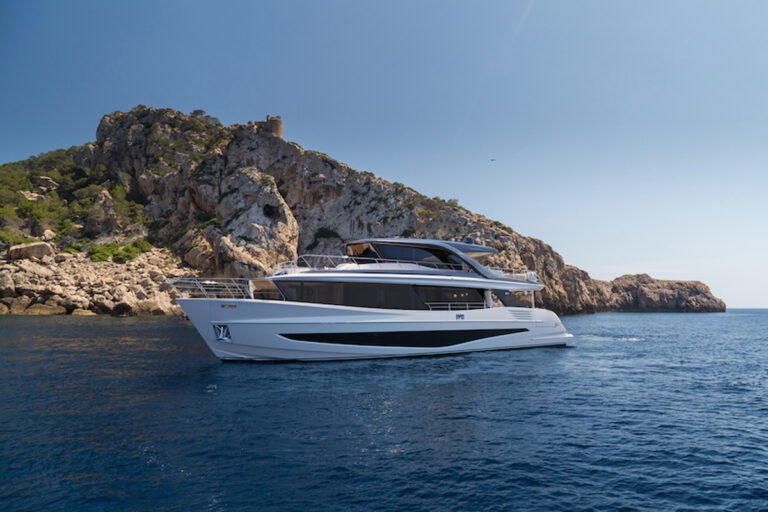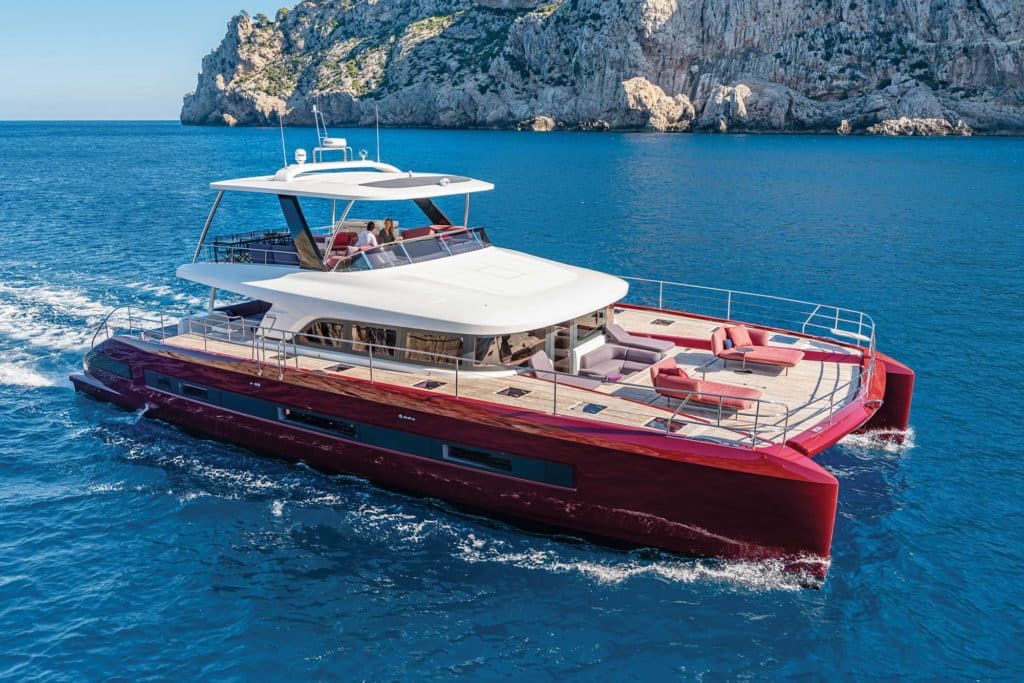
Oftentimes, powercats end up looking like wedding cakes. They start wide at the base and narrow with each successive level. Making them look good is a real challenge.
All credit, then, to Lagoon’s regular preferred creative partners, automotive-design legend Patrick Le Quément and VPLP, which respectively take the bows for exterior design and naval architecture on the Lagoon Sixty 7. It’s a catamaran that manages to unite elegance and functionality.
The Sixty 7 and its sailing sistership, the Sixty 5, replace the outgoing Lagoon 630 Motor Yacht and Lagoon 620. Around 80 of the 630s were built from 2012 through this past January, and around 170 of the 620s were delivered in the 10 years since its 2009 debut.
Usable space is the key evolution from old models to new. Lagoon says the new-generation cat designs deliver around 30 percent more floor area inside and outside. The flybridge alone adds about 40 square feet or so of alfresco lounge space below a hardtop with a sunroof. But check out the foredeck: A seating area connects to the salon via a 12-millimeter-thick glass door, making the forward end of the yacht an integral part of the living area.
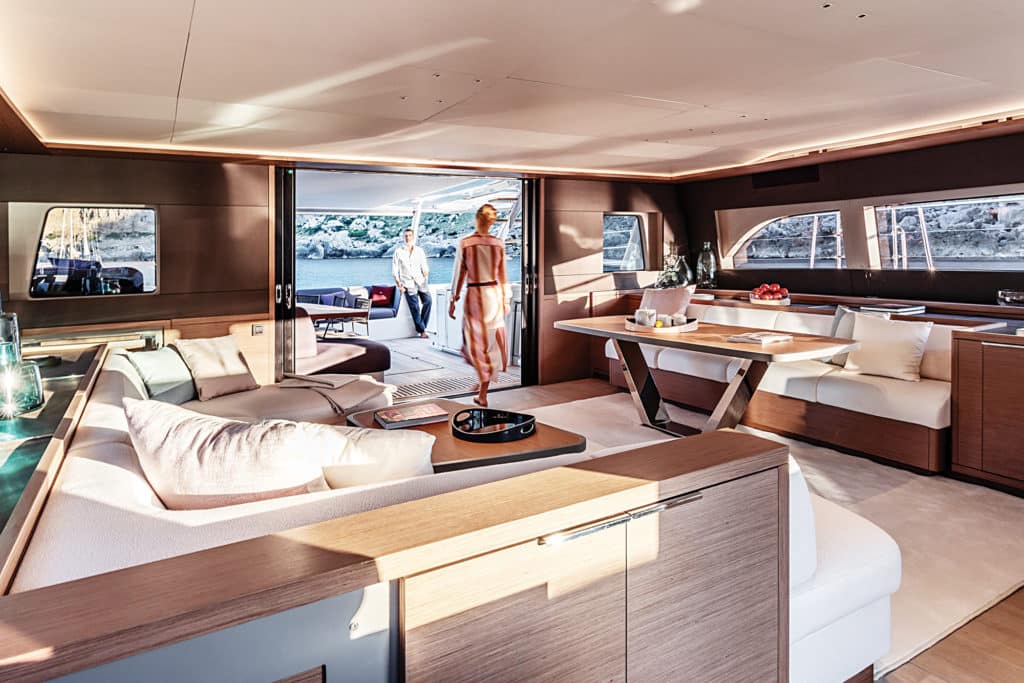
A two-person sofa is just outside the salon door, and up three steps is an open deck for movable furniture, beanbag chairs and the like. Lagoon has an exclusive range of stand-alone items from the Belgian outdoor-furniture company Tribù, which is responsible for most of the other furniture aboard. And if music’s your thing, then make sure to tick the box for the optional Waterfall Audio sound system; the clarity is unbelievable.
Given the yacht’s volume, the Sixty 7 is surprisingly nimble in turns, and the driving ergonomics couldn’t be much better at the main console in the salon or up on the flybridge. The displays are all from Simrad. A leaning post is standard at the lower helm, and a seat is optional.
The biggest difference between the power and sail versions of this yacht are the diesels and fuel tanks. The sail version has twin 150 hp Volvo Penta D3s. The powercat has more than twice the oomph: either twin 340 hp Volvo Penta D6s or twin 440 hp Yanmar 6LYs. Cat buyers—whether opting for rigs or no rigs—mostly choose the most powerful engine option.
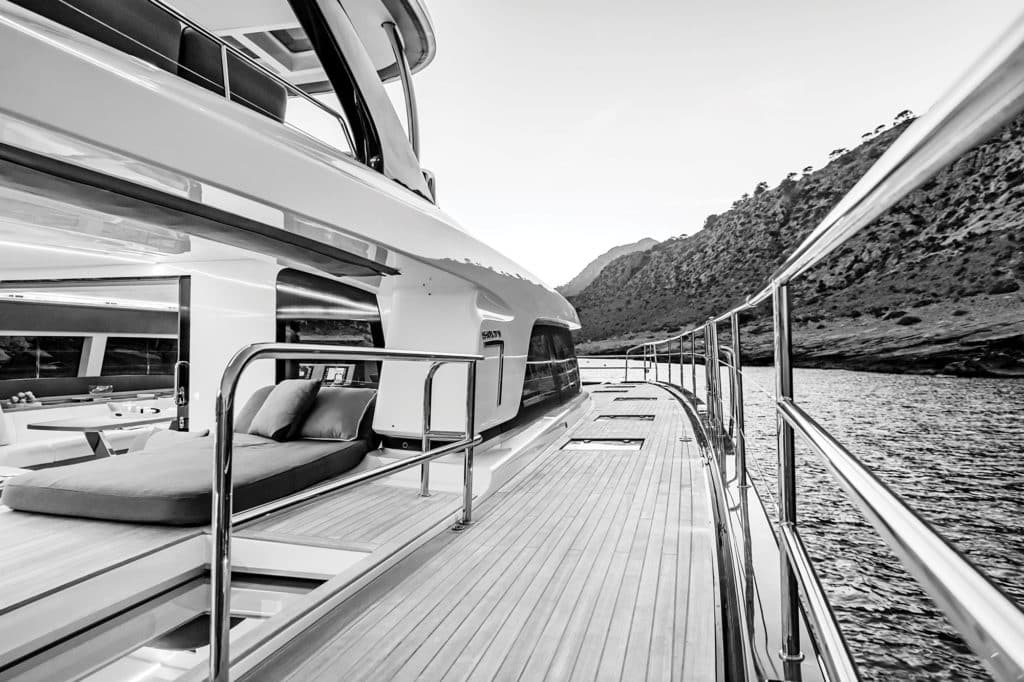
With the Yanmar diesels, 32 percent fuel, 40 percent water and nine people aboard, the Sixty 7 we ran in the Mediterranean topped 21 knots flat out, which means 3,350 rpm and a total fuel burn of almost 48 gph, or 30 hours’ worth of run time. Acceleration from rest to top speed took around 35 seconds. Not bad numbers for something moving through the water with space comparable to a $5 million, 3,000-square-foot Manhattan apartment.
Slow the yacht to a constant 2,000 rpm and 12 knots, and allowing for a 10 percent reserve, owners can plan on 1,200 nautical miles between fuel pumps. Speed up to a 14-knot fast cruise, and that range gets cut in half. Fuel capacity on the powercat version is 1,452 gallons across four tanks, two in each hull.
Generated from a three-piece mold tool, the Sixty 7′s hulls are slightly longer and flatter aft than those on the sail version because the extra weight of engines and fuel adds approximately 18,300 pounds to the yacht’s displacement. The Sixty 7 powercat draws less too: just 3 feet, 10 inches.
Nauta Design handled interiors. Three principal veneer choices are available: walnut, light oak and gray oak. Accommodations options are modular. Combinations from four to six staterooms are possible, although one sleeping space would normally be specified for crew.
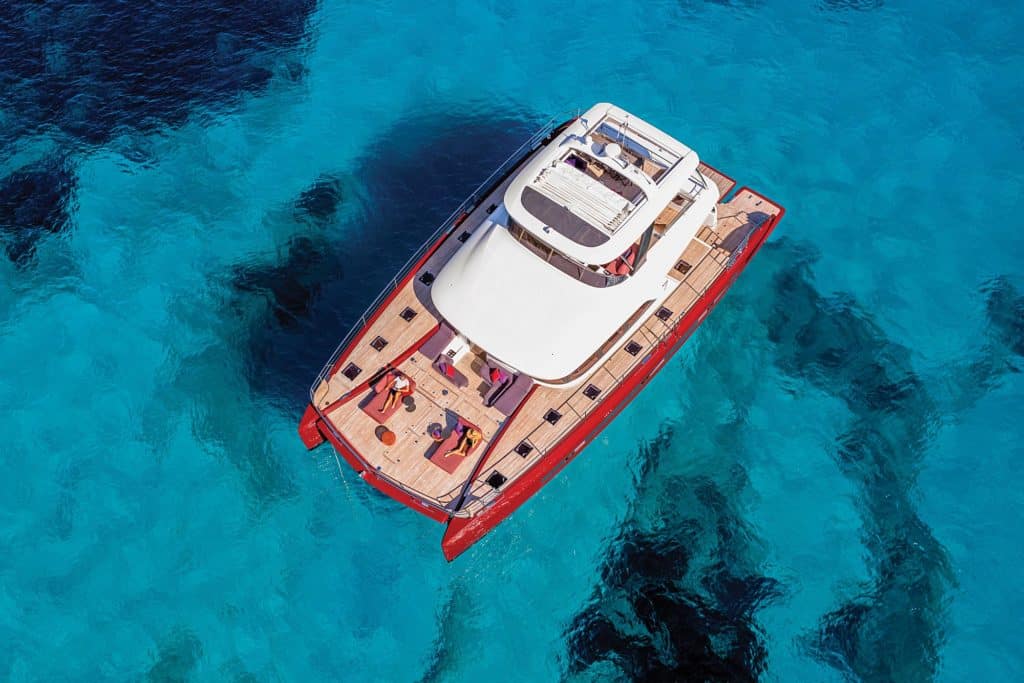
The Lagoon Sixty 7 I got aboard had four double-berth staterooms, including a master in the after half of the starboard hull with a sofa, separate shower and head stalls, and a private entrance aft. The galley and crew mess were in the after half of the port hull. There’s also the option of a galley at main-deck level, but the first four Sixty 7s were sold with the galley down; the fifth will get the galley-up layout.
The Lagoon Sixty 7 has visual appeal, the volume of a house, and the range to cruise the Eastern Seaboard almost nonstop with accommodations for a large cruising family. Sometimes, you can have your cake and eat it too.
Take the next step: cata-lagoon.com








